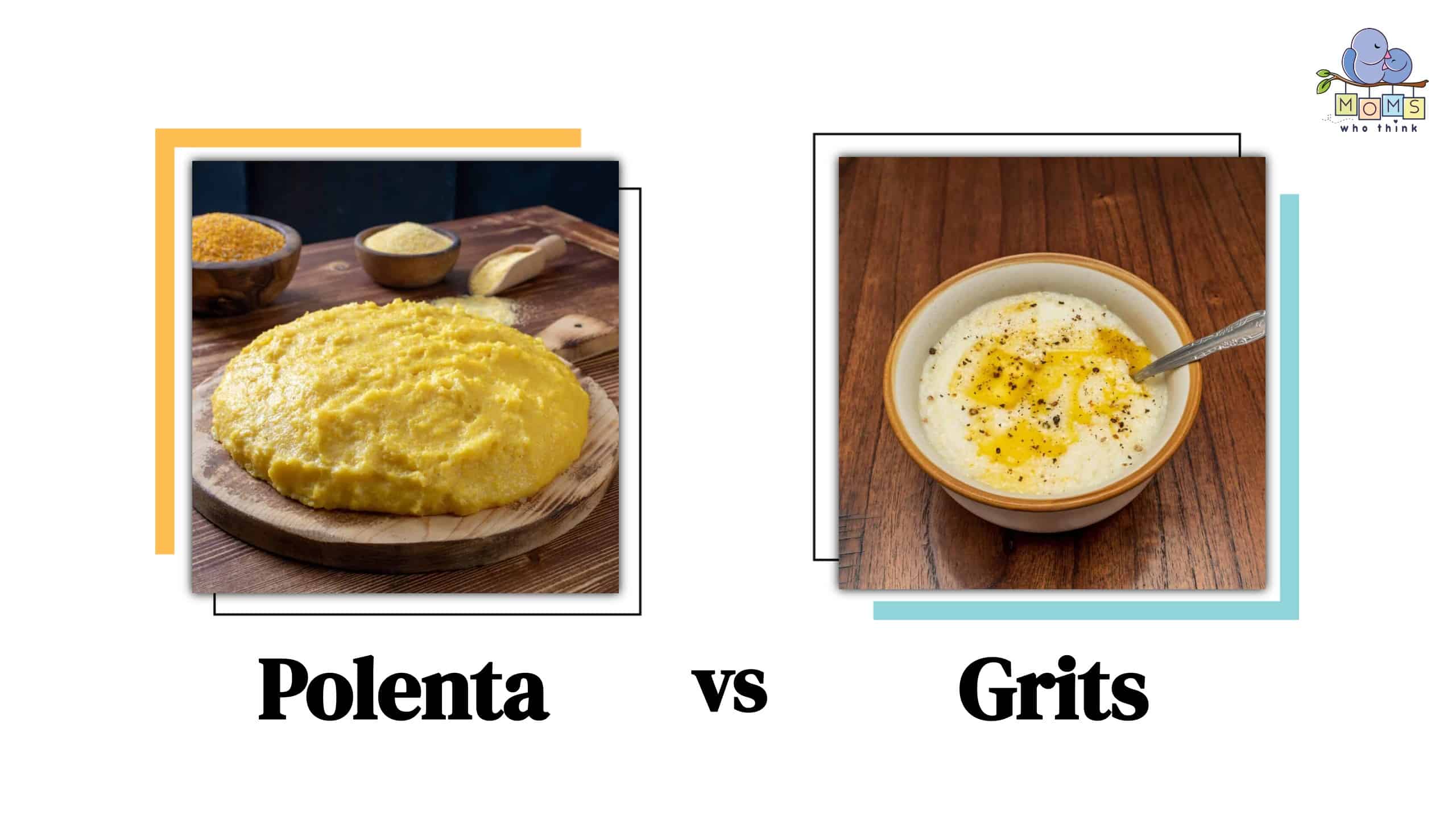Polenta vs. Grits: Nutritious Foods with Connected History – These two delicious meals are often mistaken for each other, but they have unique ingredients that set them apart. Let's explore their differences and the health benefits they offer.
Polenta and grits both have easily customizable palates, allowing users to effortlessly convert them from sweet to savory dishes, depending on the additions. But many people do not know what separates the two from each other.
Polenta is made from corn flour or cornmeal and has a coarser texture, whereas grits are made from hominy and have a creamy texture. In the South, people often enjoy grits as a popular breakfast food. While in Italy, polenta is a traditional dish that finds its place in sweet and savory recipes.
Polenta and Grits: What are the Differences?
Grits are traditionally made from hominy, a softened white corn mix. The process involves soaking the corn kernels in lye to soften the outer shell, called a hull, and then shucking the kernels from the hull and germ. Lastly, they are ground into fine powder. To cook grits, people steam them with water or milk and serve them with butter. For centuries, they have earned a reputation throughout the South as cheap, easy, and tasty meals.
Polenta is an Italian dish made of stone-ground yellow corn flour, resulting in a coarser texture than grits. It is created by grinding corn kernels, skipping the lye bath entirely. Once ground, boil the corn flour in a large pot with a 5-to-1 water ratio. People commonly use it as a side dish rather than a main meal.
Depending on what is added to the mixtures, the taste of both corn products differs significantly. Grits are mostly a breakfast item, and polenta is more seen as a lunch or dinner meal. It all depends on your location and personal tastes.
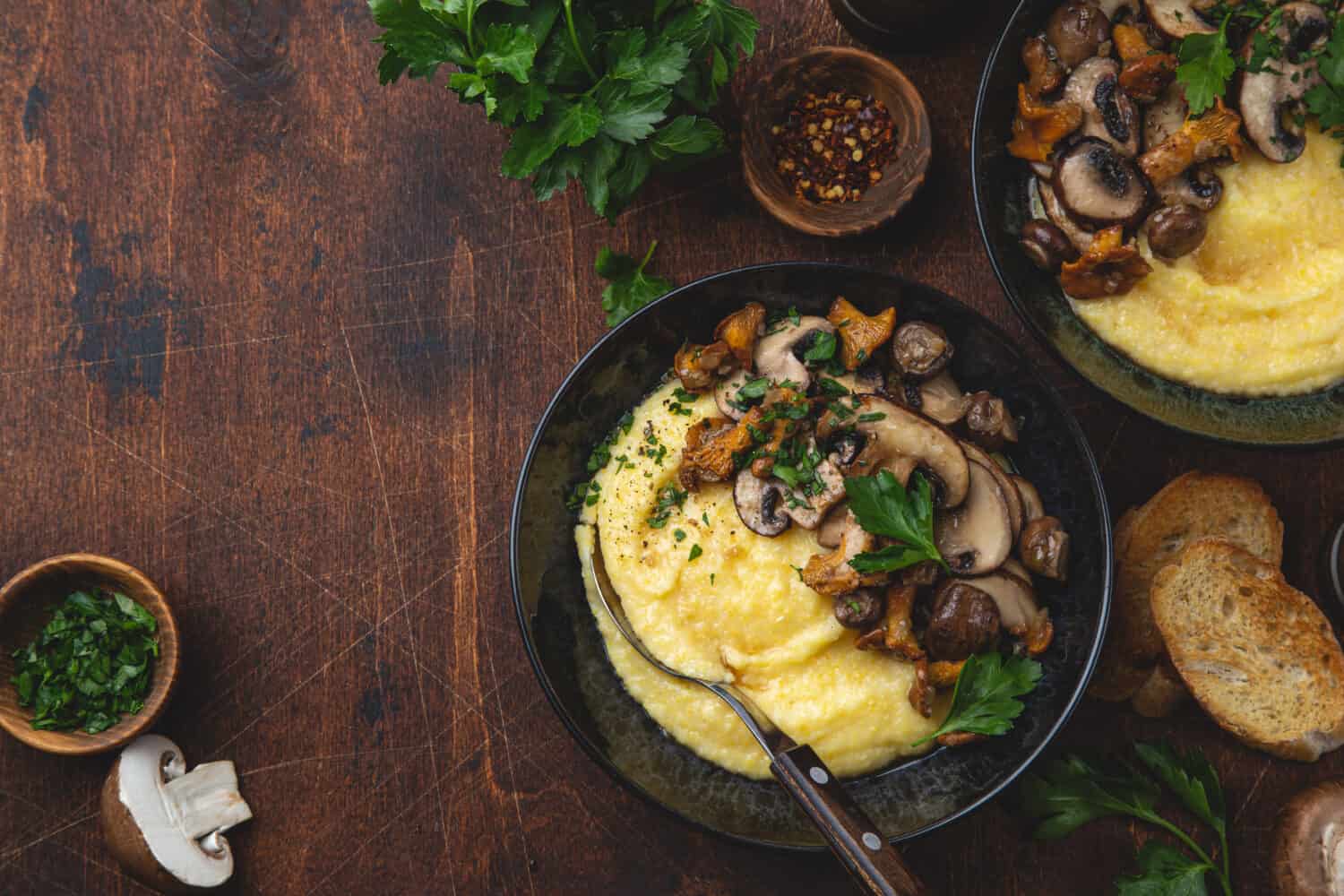
©Anna Shepulova/Shutterstock.com
Texture
When comparing polenta and grits, it's all about the texture. Grits are known for being soft and smooth, thanks to their use of finely ground hominy. On the other hand, polenta has a coarser texture than you achieve by using cornmeal. So, if you're looking for a creamy, velvety dish, grits are the way to go. But if you prefer something a bit heartier and more rustic, polenta is the perfect choice.
Uses
Due to their consistency, grits or cornmeal do not offer many possibilities for creating different dishes made of grains. However, you can put almost anything on either food to get a large rotation of meals and flavors.
Different regions and cultures influence the versatility of grits and cornmeal. In the Southern United States, people enjoy grits for breakfast, served with eggs, sausage, or shrimp. Meanwhile, people serve cornmeal in various dishes worldwide, like Italian polenta or Mexican tamales.
History
Grits have a long history dating back to colonial times in Mesoamerica. It is thought that Indigenous families shared this dish with the colonists, who then brought corn back to Italy and recreated the hominy mixture they had tried. Given their shared historical roots, it is no surprise that the cuisine has some similarities.
Cooking Methods
Polenta vs. grits, both corn-based dishes, differ in their cooking methods. To make grits, coarsely ground white cornmeal is used, requiring a longer cooking time of approximately 20-30 minutes. One typically simmers grits in water or a combination of water and milk while frequently stirring to attain a creamy consistency. In Southern cuisine, people commonly serve grits as a breakfast or side dish, and they often top them with butter, cheese, or gravy.
In contrast, people make polenta from finely ground yellow cornmeal. It cooks relatively faster, taking about 15-20 minutes. People often cook polenta with a flavorful broth like chicken or vegetable broth, which enhances its taste. While occasional stirring is beneficial, it doesn't require constant attention like grits. Italian cuisine serves polenta as a versatile dish you can enjoy as a main course or side dish, often accompanied by sauces, stews, or grilled vegetables.
In summary, the cooking methods for grits and polenta vary in corn variety, coarseness of the cornmeal, cooking liquid, cooking time, stirring requirements, and accompaniments. When preparing grits, people associate them with Southern cuisine, cook them with water or milk, and need to cook them for a longer time while constantly stirring. People cook polenta, an Italian favorite, with broth, resulting in a smoother texture and a shorter cooking time.
Types of Polentas
Polenta is a staple food prepared in various forms, each with unique characteristics. Among these variations, one example is Palenta Kompirica, a traditional Croatian dish that combines polenta with mashed potatoes and white flour. Polenta's versatility in cooking is impressive, as it allows for preparing a broad range of dishes, including pizzas, casseroles, and lasagnas. Additionally, one can prepare polenta in a variety of ways, including frying, grilling, or baking, which adds to its versatility and makes it a delicious addition to any meal.
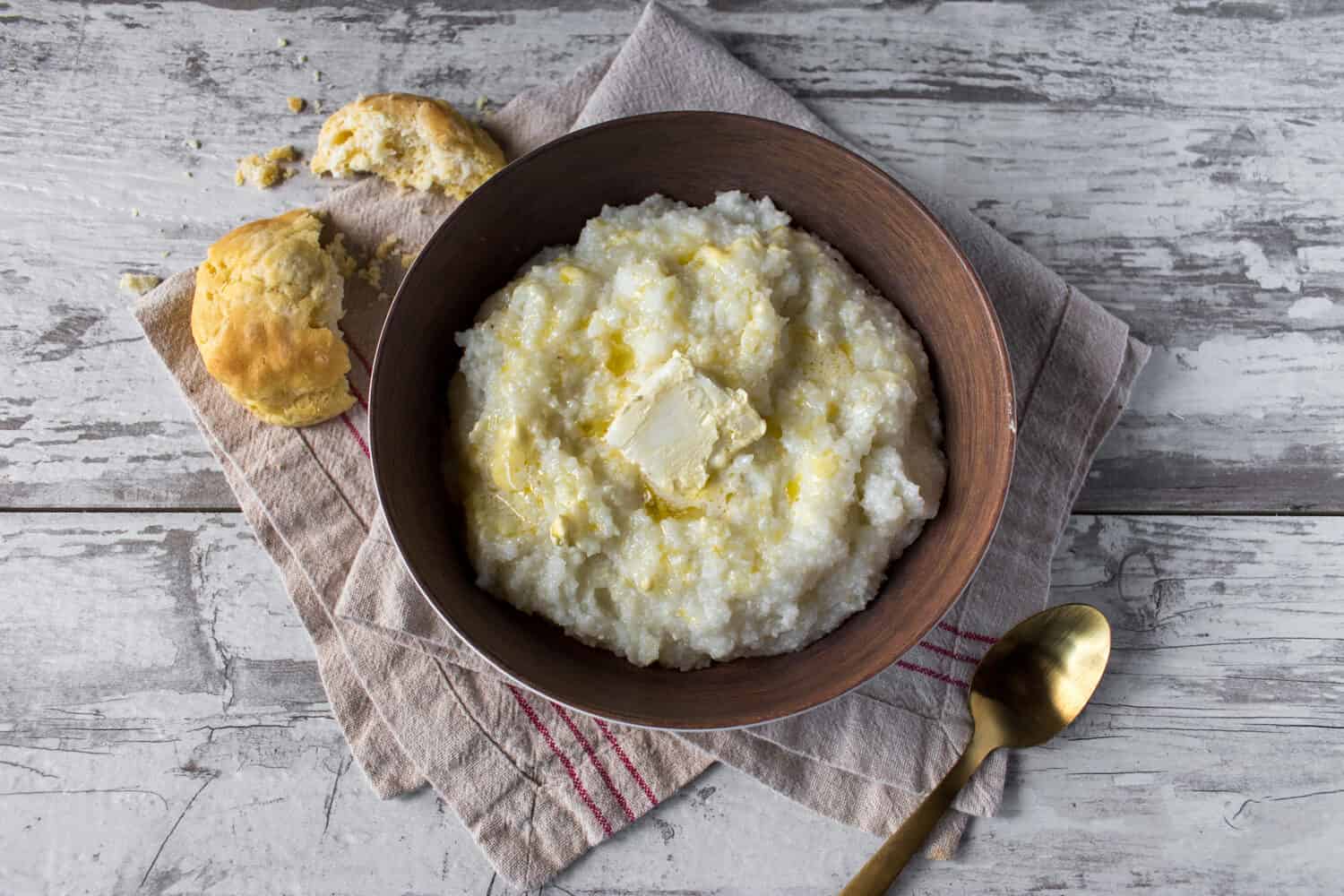
©Lynne Ann Mitchell/Shutterstock.com
Types of Grits
Althrough grits can essentially be served anytime of the day, it's typically served as a breakfast food. Many have it as a main or side dish and top it with butter or cheese. While the most popular type of grits is made with hominy, a softened white corn mix, there are a few others that are also popular: traditional stone-ground, quick-cooking, and instant.
Items to Try with Grits
People traditionally serve grits as a breakfast dish and often pair them with flavorful additions such as cinnamon, fresh fruits, or eggs to create a delicious and nutritious meal. People can enjoy grits as a savory side dish or main course during lunch or dinner, pairing them with cheese, shrimp, or barbecue for added flavor. To achieve the perfect creamy texture, people typically combine grits with rich ingredients such as butter or milk, resulting in a tasty and forgiving dish.
Items to Try with Polenta
Polenta is an adaptable dish that offers an overload of tasty options. For those who prefer savory flavors, you can try it with juicy tomatoes, beef, mushrooms, or caramelized onions. However, if you have a sweet tooth, you can try the dish by adding a drizzle of honey or some nuts. Regardless of your taste preferences, polenta will always satisfy your palate.
What is the Nutritional Value of Polenta vs. Grits?
While people commonly believe that consuming grains such as corn is beneficial for one's health, the reasons for this claim may not be entirely clear. To provide a more comprehensive understanding, exploring the advantages of adding dishes like polenta or grits into one's diet would be helpful. By doing so, individuals may reap the many benefits of these nutritious and versatile grains.
If you're concerned about consuming too many calories or fat, you may want to consider choosing instant grits over plain polenta. Instant grits offer only 84 calories and less than 3 grams of fat per 100-gram serving, whereas plain polenta contains roughly 355 calories and no fat. This information can be helpful when making dietary decisions that align with your goals and preferences.
Corn, the main ingredient in grits and polenta, offers numerous health benefits. Including its low glycemic index, which aids in digestion and helps prevent blood sugar spikes. Nonetheless, the degree of processing can significantly impact its health benefits, depending on the product you select.
It is worth noting that both dishes in their plain states are completely gluten-free. This is because they are comprised solely of grains derived from corn plants.
While both foods are healthy, it is crucial to consider what goes into these dishes. Remember, moderation is key when consuming any food. You can enhance the nutritional value of your meal by incorporating other healthy foods alongside polenta vs. grits.
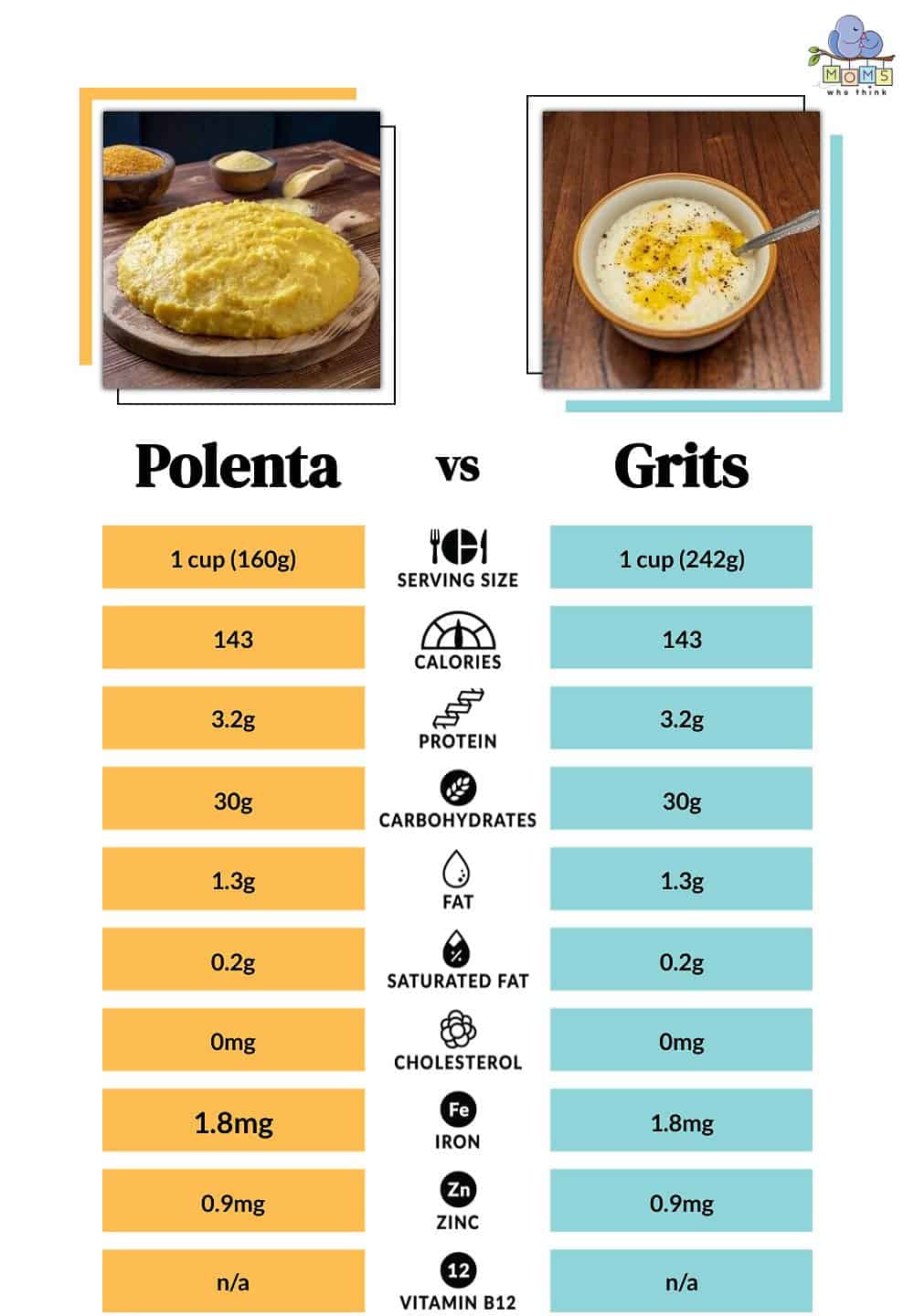
What is Similar to Polenta and Grits?
If, for whatever reason, you find yourself unable to use polenta or grits, it might be useful for you to check for other potential substitutes that can fill the same function.
Quinoa
Quinoa originates from Latin America. Its mild taste makes it a versatile ingredient that can be used in sweet and savory dishes. White quinoa is a popular variety that can be substituted for either subject. Additionally, quinoa is rich in protein and nutrients, making it a healthy addition to any meal.
Oatmeal
Oatmeal is derived from the oat plant after its hull has been removed. You can trace oatmeal's origins back to Greece, where it was first discovered. It was later further developed by China. People can consume oatmeal with the latter preparation, method resulting in a porridge-like consistency similar to that of grits or polenta. Due to its versatility, people often use oatmeal as a substitute for grits and polenta.
Rice
Rice, an ancient grain originating in China, has existed for anywhere from 8 million to 12 million years. People typically prepare it by boiling or steaming, and it boasts a subtle flavor that pairs well with various toppings, or you can enjoy it as a simple side dish. Given its versatility, rice may be an excellent substitute in many dishes.
Semolina
Another kind of flour that can serve as a replacement for grits is semolina. Even though polenta's texture may be slightly coarse, it shares a finely ground consistency with grits, resulting in a comparable mouthfeel. Semolina flour has a distinct taste, but its neutral flavor profile makes it a highly versatile option for toppings.
Final Thoughts
Polenta vs. Grits: You can't go wrong with either of these meal options. Not only are they incredibly flexible, but they also provide a wealth of vital nutrients. Additionally, both dishes have a fascinating and interconnected history. If you find yourself in a bind, substitute one meal for the other, depending on your tastes.
Polenta, a dish with a rich history, traces its roots back to its cousin, grits. The Native Americans shared their knowledge of corn and its cooking methods with the European colonists. Who then brought this ingredient home to plant. The subtle differences in texture and flavor between these two dishes are a testament to their unique origins.
Millions of people worldwide enjoy both polenta and grits as hearty meals. To achieve a thick consistency, one makes polenta by boiling cornmeal. Before being ground, grits undergo soaking in a lye bath. Although they come from the same grains, they have different processes to make the final product. Wherever you go, you will likely encounter someone who shares your love for either one or both dishes.
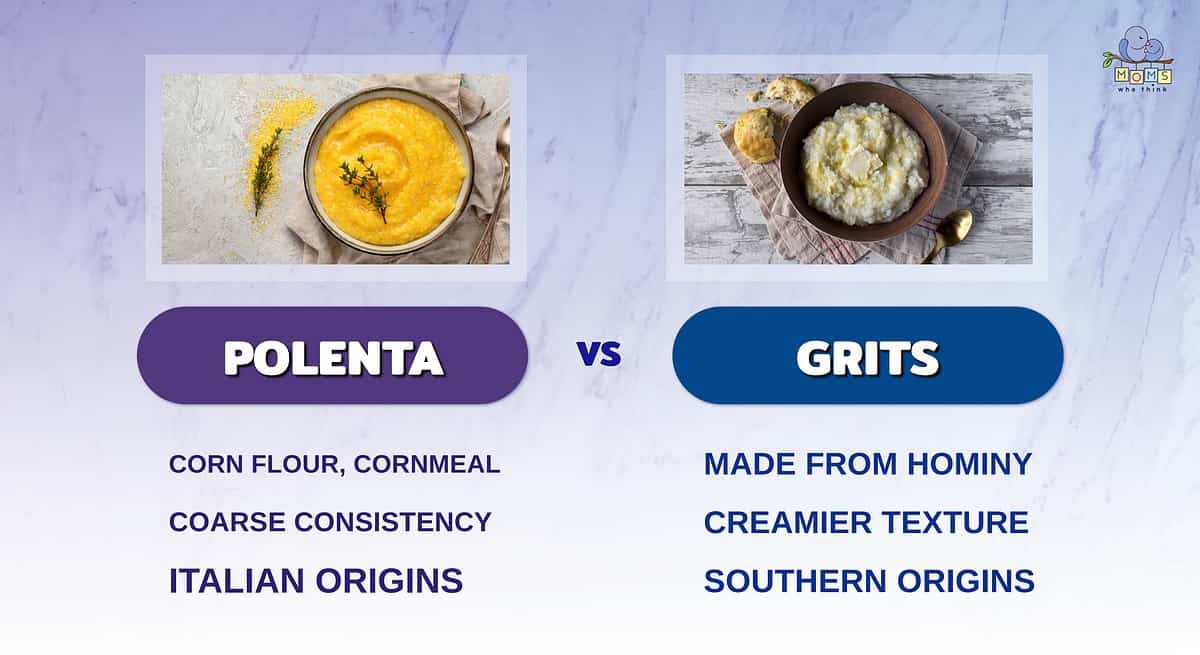
These two dishes may be often mistaken for each other, but now that you know the most common differences, it might be easier to tell them apart. Let's recap and take a look at how polenta and grits differ:
- Grits are made from hominy or corn, whereas polenta is made from corn flour or cornmeal.
- Typically, polenta is more of a traditional Italian Dish, and grits is a popular dish served in the South.
- Polenta is typically served as a side dish to a main course, whereas grits are well-known to be more of a breakfast food.
- Finally, polenta has a slightly quicker cooking time, 15-20 minutes, then grits, which cooks in 20-30 minutes.
Take a look at this Grillades and Cheese Grits recipe:
Print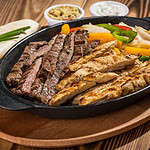
Grillades and Cheese Grits
Ingredients
2 pounds top round steak (about 1/2 inch thick)
1 teaspoon salt, divided
1/4 teaspoon pepper
1/4 cup all-purpose flour, divided
2 tablespoons vegetable oil
2 celery ribs, chopped
1 red bell pepper, cored and chopped
1 medium onion, chopped
3 garlic cloves, minced
1 (14 ounce) can beef broth
1 teaspoon dried Italian seasoning
1/2 teaspoon ground red pepper
2 (14 1/2 ounce) cans diced tomatoes with basil, garlic, and oregano
2 cups uncooked quick-cooking grits
2 cups Gruyère cheese, shredded (about 8 ounces)
Chopped fresh parsley, for garnish if desired
Instructions
1. Sprinkle steak with ½ teaspoon salt and pepper. Set aside 1 tablespoon flour. Cut steak into 2-inch pieces; dredge in remaining flour.
2. Heat oil in a large nonstick skillet over medium-high heat; add steak, and cook 3 minutes on each side or until browned. Transfer to a 5-quart slow cooker.
3. Add vegetables and garlic to skillet; sauté 3 minutes. Add beef broth, stirring to loosen particles from bottom. Stir in Italian seasoning and red pepper. Pour mixture over steak.
4. Drain 1 can tomatoes. Add drained tomatoes and remaining can tomatoes to steak mixture. Cover and cooker on low 6 hours or until steak is very tender.
5. Increase heat to high. Stir together reserved flour and 2 tablespoons water until smooth; gently stir into steak mixture. Cover and cook 15 minutes or until mixture is slightly thickened.
6. Meanwhile, bring 8 cups water and remaining ½ teaspoon salt to a boil in a 4-quart saucepan; gradually whisk in grits. Reduce heat, and simmer, whisking often, 5 minutes or until thickened; stir in cheese. Serve grillades over grits. Garnish, if desired.
